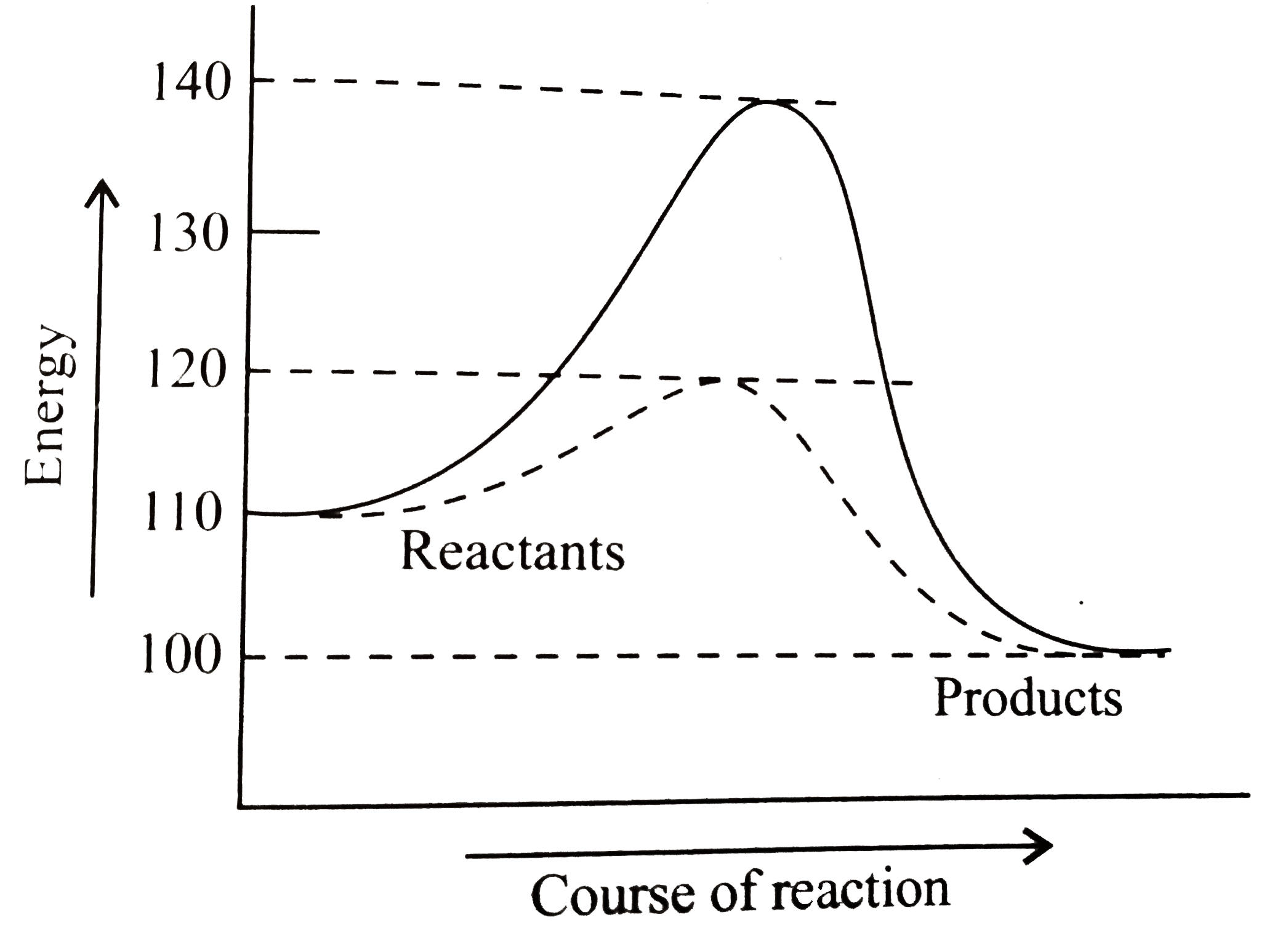ΔGΘ tells us:
a. Whether a change is feasible or not.
b. How far a reaction will proceed.
c. About emegry of activation.
ΔG tells about feasibility of a reaction.
Topper's Solved these Questions
- THERMODYNAMICSBOOK - CENGAGE CHEMISTRY ENGLISHCHAPTER - THERMODYNAMICSEXERCISE - Exercise
1 Videos
- THERMODYNAMICSBOOK - CENGAGE CHEMISTRY ENGLISHCHAPTER - THERMODYNAMICSEXERCISE - Ex 6.1
26 Videos
- STOICHIOMETRYBOOK - CENGAGE CHEMISTRY ENGLISHCHAPTER - STOICHIOMETRYEXERCISE - Archives Subjective
33 Videos
Similar Questions
A reaction proceeds 5 times more at 60∘C, as it does at 30∘C . Calculate the energy of activation.
View Solution(a) Explain the following terms :
(i) Order of a reaction
(ii) Molecularity of a reaction
(b) The rate of a reaction increases four times when the temperature changes from 300 K to 320 K. Calculate the energy of activation of the reaction, assuming that it does not change with temperature. (R=8.314JK−1mol−1)
View SolutionDefine electrochemical series. How it helps to predict whether a given reaction is feasible in a given direction or not?
View SolutionThe rate of a reaction triples when temperature changes from 20∘C to 50∘C. Calculate the energy of activation.
View SolutionThe activation energy for a first order reaction is 60 kJ mol−1 in the absence of a catalyst and 50 kJ mol−1 in the presence of a catalyst. How many times will the rate of reaction grow in the presence of the catalyst if the reaction proceeds at 27∘C ?
View SolutionThe activation energy for a first order reaction is 60 kJ mol−1 in the absence of a catalyst and 50 kJ mol−1 in the presence of a catalyst. How many times will the rate of reaction grow in the presence of the catalyst if the reaction proceeds at 27∘C ?
View SolutionThe activation energy for a first order reaction is 60 kJ mol−1 in the absence of a catalyst and 50 kJ mol−1 in the presence of a catalyst. How many times will the rate of reaction grow in the presence of the catalyst if the reaction proceeds at 27∘C ?
View SolutionRefer picture given below.
(a) Calculate ΔH for the reaction and the energy of activation for the forward reaction as well as backward reaction.
(b) The dotted curve is in the presence of a catalyst. What is the energy of activation for the two reactions in the presence of catalyst?
( c) Will the catalyst change the extent of reaction?

View SolutionDraw a representative reaction curve for an exothermic reaction and (i) label the activation energies for the forward and reverse reaction (ii) enthalpy for the forward and reverse reactions. How will the curve change with the addition of a catalyst ?
View SolutionWhen 1pentyne (A) is treated with 4N alcoholic KOH at 175∘C, it is slowly converted into an equilibrium mixture of 1.3% of 1pentyne (A),95.2%2-pentyne (B) and 3.5% of 1,2-pentandiene (C). The equilibrium was maintained at 175∘C. Calculate ΔGΘ for the following equilibria:
B⇔A,ΔGΘ=1?
B⇔C,ΔGΘ=2?
From the calculated value of ΔGΘ1and ΔGΘ2, indicate the order of stability of A,B and C. Write a reasonable reaction mechanism showing all intermediates leading to A,B and C.
View Solution
